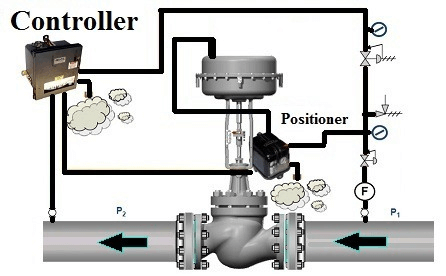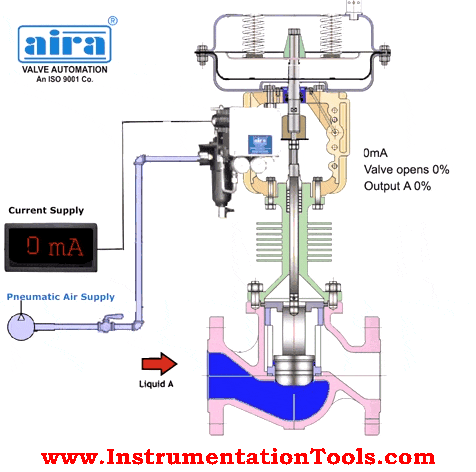The Function of Control Valves in Liquid Circulation Administration Solution
The Function of Control Valves in Liquid Circulation Administration Solution
Blog Article
Achieve Seamless Assimilation and Control With Top Quality Structure Automation Controls
In the realm of modern-day structure administration, the relevance of quality structure automation controls can not be overemphasized. Embracing high quality building automation controls is not simply an issue of comfort but a calculated vital for companies intending to enhance their centers' efficiency and sustainability.

Development of Building Automation Controls
Throughout the past couple of years, the evolution of developing automation controls has dramatically changed the method buildings are taken care of and operated. Developing automation systems primarily concentrated on standard functions such as regulating air flow, air, and heating conditioning (COOLING AND HEATING) systems. As technology advanced, these controls have come to be much more innovative, allowing for a larger array of structure systems to be incorporated and managed centrally.
The development of developing automation controls has actually seen a change in the direction of even more intelligent systems that can adjust to transforming problems in real-time. This flexibility is crucial for enhancing energy effectiveness and ensuring resident convenience. Furthermore, contemporary structure automation controls currently offer functions such as predictive upkeep, remote tracking, and information analytics, making it possible for center supervisors to make data-driven decisions to improve building efficiency.

Advantages of Quality Integration
The advancement in building automation manages in the direction of more smart systems has actually underscored the significant advantages of quality combination in enhancing structure procedures and enhancing overall performance. Quality combination of constructing automation controls provides numerous essential benefits. First of all, it brings about enhanced power performance by permitting various systems to interact effortlessly, making certain optimum performance and minimizing power waste. Quality integration improves passenger convenience and productivity by enabling personalized control over ecological settings like temperature, air, and lighting top quality. This personalization can result in a more favorable and comfortable working or living environment. Furthermore, quality assimilation streamlines upkeep and fixing procedures, as all systems are adjoined and can be monitored and controlled from a central interface. This centralized control additionally supplies better exposure and insights right into building efficiency, allowing proactive upkeep and optimization strategies. In general, the benefits of high quality integration in building automation controls are obvious, supplying enhanced performance, comfort, and operational effectiveness.
Improved Individual Experience and Ease Of Access
Enhancing user interaction with building automation manages via intuitive design and boosted availability boosts the total experience for owners and center managers alike. By concentrating on customer experience, constructing automation systems can come to be extra straightforward and efficient. Intuitive interfaces, clear navigation, and adjustable settings encourage users to engage with the controls quickly and properly.
Access attributes play a vital function in guaranteeing that all individuals, consisting of those with handicaps, can utilize the building automation controls with ease. Including functions such as voice commands, tactile buttons, and color-contrasted display screens can boost accessibility and make the controls extra inclusive.
In addition, boosted individual experience leads to greater individual contentment, boosted productivity, and far better decision-making. Passengers can change environmental settings according to their choices, while facility supervisors can effectively handle and keep track of structure systems - control valves. In general, focusing this on individual experience and accessibility in structure automation controls adds to a much more seamless and efficient building setting for all stakeholders involved
Lasting Practices Through Automation

Furthermore, automation can assist in the integration of eco-friendly energy sources such as solar panels or wind generators right into building operations. By instantly changing energy usage based upon the availability of renewable resource, structures can further decrease their dependence on non-renewable resources. This seamless assimilation of lasting practices not only benefits the atmosphere however additionally improves the overall functional performance and cost-effectiveness of the building. With automation, buildings can align with contemporary sustainability goals and add to a greener future.
Future Trends in Structure Control Solution
In anticipation of progressing and advancing innovations sustainability methods, the trajectory of building control systems is poised to accept transformative techniques and cutting-edge remedies. One famous pattern shaping the future of structure control systems is the boosted combination of Artificial Intelligence (AI) and machine learning. These innovations enable structures to adjust in real-time to changing conditions, optimizing energy intake and improving comfort for passengers. Furthermore, the Internet of Points (IoT) is changing structure control systems by attaching sensors and tools to simplify procedures and enhance performance.
One more vital trend is the focus on cybersecurity measures to shield against prospective hazards to developing automation systems. As structures end up being extra interconnected, making sure durable cybersecurity protocols will be necessary to guard sensitive data and stop unauthorized accessibility.
Furthermore, the change towards cloud-based systems is getting momentum, permitting centralized control and remote access to structure systems. This promotes much company website easier tracking, upkeep, and updates, improving the total efficiency and flexibility of building control systems. As modern technology proceeds to advance, these trends are expected to form the future landscape of structure automation controls, driving technology and sustainability in the built setting.
Conclusion
Future fads in structure control systems are likely to focus on more improving automation capabilities for enhanced power performance and general efficiency. It is essential for structure owners and drivers to prioritize the adoption of top quality structure automation controls to maximize building procedures and attain long-lasting sustainability goals.
In the world of modern structure monitoring, the value of high quality building automation controls can not be overemphasized. On the whole, the advancement of building automation regulates continues to drive development in the building monitoring market, offering brand-new possibilities for developing smarter and much more lasting buildings.
The innovation in building automation regulates towards more smart systems has highlighted the substantial advantages of top quality integration in enhancing building procedures and enhancing total efficiency. On the whole, prioritizing individual experience and accessibility in building automation controls contributes to an extra seamless and efficient building atmosphere for all stakeholders included.
It is important for building proprietors and drivers to prioritize the adoption of high quality building automation controls to enhance structure procedures and accomplish long-term sustainability goals. - control valves
Report this page